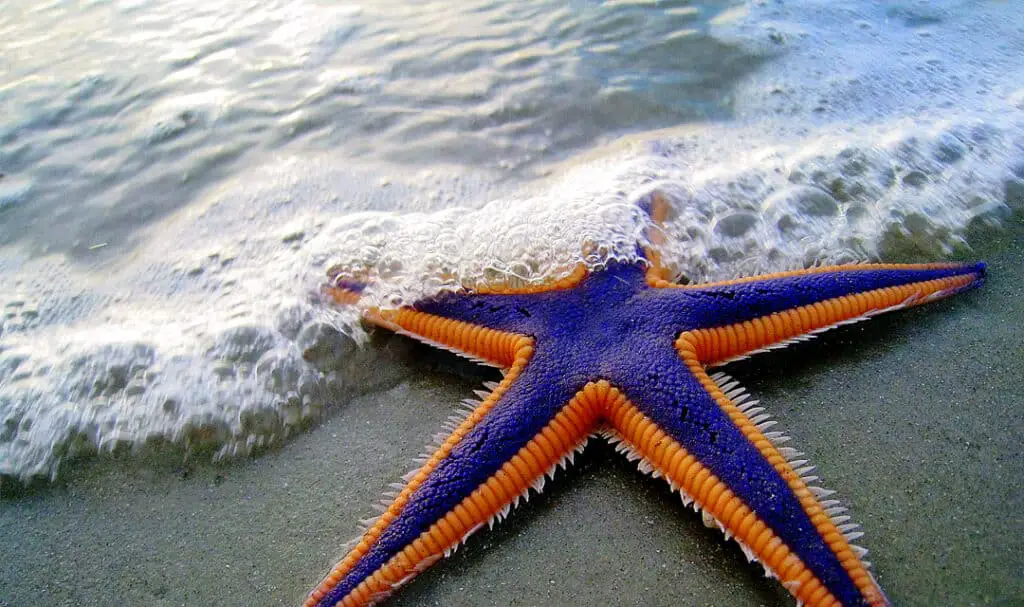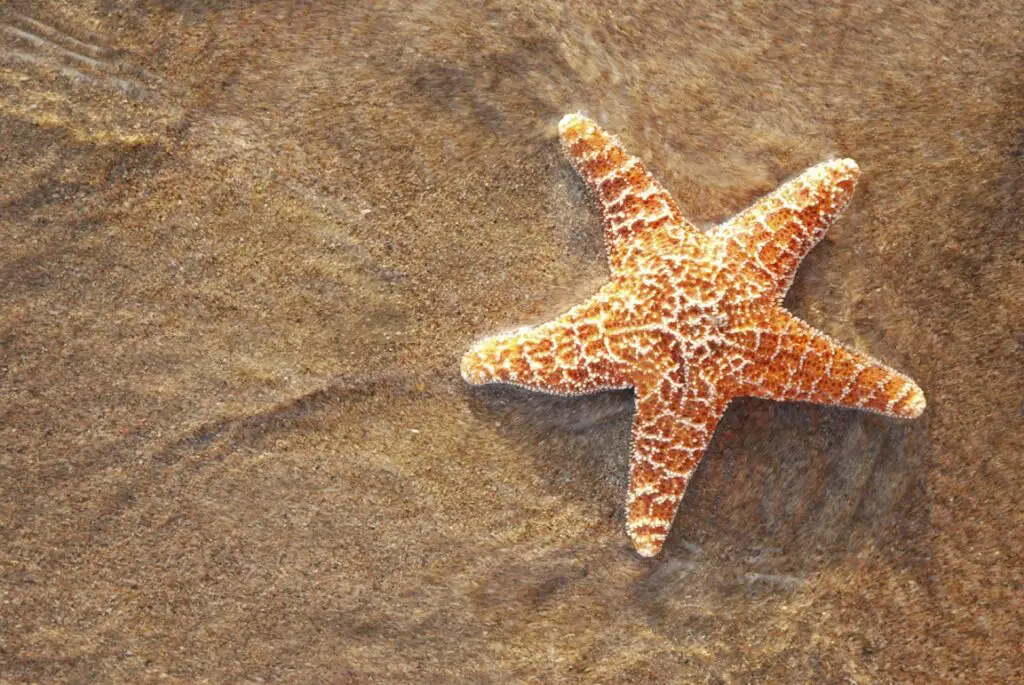Where Are Starfish Eyes

Introduction
Where Are Starfish Eyes: While we often associate these remarkable marine animals with their distinctive radial symmetry and vibrant colors, this book takes us on a journey into the hidden and lesser-known aspects of their existence.
The title, “Where Are Starfish Eyes,” immediately intrigues, inviting readers to ponder the curious nature of starfish. The introduction sets the stage for a deep dive into the world of these captivating sea creatures, promising to reveal secrets about their eyes that are both surprising and illuminating.
Throughout the book, readers can expect to unravel the mysteries of starfish vision, an aspect often overshadowed by their striking appearance. The narrative goes beyond superficial observations, delving into the intricacies of starfish eyes and how they function within the context of their underwater habitats.
We can anticipate a blend of scientific inquiry and storytelling that will leave us with a profound appreciation for these remarkable creatures and a deeper understanding of the intricacies of life beneath the ocean’s surface. Whether you are a marine biology enthusiast or simply curious about the natural world, this book promises an illuminating and captivating exploration of starfish and their fascinating eyes.
Do starfish have eyes or not?
Lacking a brain, blood and even a central nervous system, it might come as a surprise to you that starfish have eyes. Just to further add to their unusual anatomy, their eyes are on the end of their arms.
Starfish do have eyes, but they are not quite like the eyes we commonly associate with animals. Instead, starfish possess a unique and simple visual system that helps them navigate their underwater environments.
Starfish have clusters of light-sensitive cells, known as ocelli, located at the tips of their arms. These ocelli can detect changes in light intensity and help the starfish perceive its surroundings. However, they don’t form detailed images like our eyes do. Instead, these eye-like structures primarily help the starfish distinguish between light and dark, which aids in basic orientation and navigation.
The presence of these rudimentary eyes is particularly important for starfish as they move across the ocean floor in search of food, avoiding obstacles and predators. While their vision may be limited compared to more advanced visual systems found in other animals, it serves a crucial purpose in their survival.
Starfish do have a form of eyes in the sense that they have light-sensitive cells, but their eyes are far simpler than those of many other animals, and they primarily enable the starfish to perceive changes in light and darkness in their aquatic habitats.

Where is starfish eyes located?
Most starfish possess a crude eye at the tip of each arm. These compound eyes contain multiple lenses called ommatidia, each creating one pixel of the total image the animal sees.
Starfish eyes are located at the tips of their arms, specifically in tiny clusters known as ocelli. These ocelli are often a few millimeters in size and are typically found at the end of each of the starfish’s five arms, although the exact number and arrangement can vary among different species.
The placement of the eyes at the tips of their arms is advantageous for starfish. It allows them to have a wider field of vision and better perceive their surroundings as they move along the ocean floor. This positioning is especially useful for detecting changes in light, which aids in their basic navigation and helps them locate prey or avoid predators.
While these ocelli are not capable of forming detailed images like human eyes, they serve the starfish well in their underwater world. They can sense variations in light intensity, helping the starfish distinguish between light and dark areas, which is essential for their survival and ability to thrive in their marine habitats.
In essence, the location of starfish eyes at the tips of their arms is a remarkable adaptation that showcases the diversity of visual systems in the animal kingdom, tailored to suit the specific needs of these fascinating marine creatures.
How many eyes does a starfish have and where are they located?
Starfish have eyes—one on the end of each of their arms—but what they do with them was anyone’s guess. Starfish have historically been thought of as simple animals.
Starfish typically have multiple eyes, with the number varying among different species. Most commonly, they have one eye, or cluster of eyes, at the tip of each of their arms. Since starfish typically have five arms, this means they can have five eyes or more, depending on the species.
These eyes are not like the complex eyes of humans or some other animals. Instead, starfish have simple eyes called ocelli. Ocelli are light-sensitive structures that can detect changes in light intensity but do not form detailed images like our eyes. They primarily help starfish distinguish between light and dark, aiding in basic orientation and navigation.
The distribution of eyes at the tips of their arms is strategically advantageous for starfish. It provides them with a wide field of vision, allowing them to perceive their surroundings effectively as they move along the ocean floor. This positioning helps them locate food, avoid obstacles, and detect potential predators.
Starfish can have multiple eyes, typically located at the tips of their arms. These eyes, called ocelli, are simple and serve essential functions in helping starfish navigate and survive in their aquatic environments.
Can starfish see in Colour?
There are indications that they are involved in negative phototaxis but this may also be governed by extraocular photoreceptors. Here, we show that the eyes of the coral-reef-associated starfish Linckia laevigata are slow and colour blind.
Starfish, with their simple eyes known as ocelli, do not see in color as humans do. Instead, their visual perception is primarily focused on distinguishing between light and dark areas in their underwater environment. Ocelli are not equipped with the specialized cells called cones, which are responsible for color vision in animals with more complex visual systems like humans.
The ability to perceive color is a more advanced visual adaptation found in animals with more sophisticated eyes. In contrast, starfish rely on their ocelli to detect changes in light intensity, helping them navigate, locate prey, and avoid potential threats in their oceanic habitats.
While starfish cannot appreciate the vibrant colors of the marine world in the same way humans can, they compensate for this limitation with other remarkable sensory adaptations. They possess a strong sense of touch, which allows them to detect textures and shapes, and their chemoreceptors help them locate food through chemical cues.
What do starfish use their eyes for?
laevigata starfish use vision to detect large stationary objects. Given their ecology and close association with coral reefs, it seems likely that they use visual cues to discriminate reef structures from the open sea in order to navigate towards their preferred habitat.
Starfish use their eyes, which are simple structures called ocelli, for several crucial purposes in their underwater existence:
- Basic Navigation: The primary function of starfish eyes is to help these creatures navigate their aquatic environment. By detecting variations in light intensity, they can distinguish between light and dark areas, which assists in their movement across the ocean floor. This ability aids them in avoiding obstacles and finding suitable habitats or prey.
- Locating Prey: Starfish are predators, and their eyes assist in locating potential sources of food. They can detect movements and shapes, which helps them locate small invertebrates like mollusks, crustaceans, and other prey items. Their eyes provide them with a better chance of catching their meals.
- Predator Avoidance: Like many animals, starfish need to be aware of potential predators. Their eyes help them detect looming threats from nearby predators, allowing them to respond defensively, such as by retreating or employing other defense mechanisms to avoid being eaten.
- Reproductive Behaviors: Starfish may also use their eyes during reproductive behaviors, such as locating mates or identifying suitable locations for releasing their eggs and sperm during spawning events.
While starfish eyes are not as advanced as those of some other animals, their simple but effective light-sensing structures play a crucial role in the survival and ecological interactions of these fascinating marine creatures in their underwater habitats.
How do starfish eyespots function?
A3: Starfish eyespots are sensitive to changes in light and darkness, allowing the starfish to detect variations in their environment. While they cannot see detailed images, these eyespots help them navigate and locate prey.
Starfish eyespots, also known as ocelli, are simple light-sensitive structures that play a vital role in helping these marine animals navigate and interact with their underwater environment. Here’s how starfish eyespots function:
- Detecting Light and Darkness: Starfish eyespots contain light-sensitive cells known as photoreceptors. These cells can detect changes in light intensity. While they can’t form detailed images like more complex eyes, they are highly sensitive to variations in light and darkness.
- Basic Orientation: The main function of starfish eyespots is to provide a basic sense of orientation. They allow starfish to distinguish between light and dark areas in their surroundings. This ability is crucial for navigating the ocean floor, helping starfish avoid obstacles and find their way around.
- Locating Prey: Starfish are predators, and their eyespots help them locate potential prey. They can detect movements and shapes, enabling them to spot small invertebrates like mollusks and crustaceans. This sensory ability increases their chances of capturing food.
- Predator Avoidance: Starfish also need to be aware of potential threats from predators. The eyespots help them detect nearby predators by sensing changes in light caused by the approaching predator’s shadow or movement. This early warning system allows starfish to take defensive actions to avoid becoming prey themselves.
Starfish eyespots serve as simple but effective sensory organs for detecting light and darkness, aiding in navigation, locating prey, and avoiding predators. While they may not provide detailed vision, they are well-suited to the starfish’s needs in their underwater habitat.
Are all starfish eyespots the same?
The number and distribution of eyespots can vary among different starfish species. Some may have numerous small eyespots on each arm, while others may have larger eyespots on only a few arms.
While the basic function of eyespots is to detect changes in light intensity and assist with basic orientation, there can be variations in the structure and number of eyespots among different starfish species.
- Number of Eyespots: The number of eyespots can vary from one species to another. Some starfish have a single eyespot at the tip of each arm, resulting in five eyespots, while others may have multiple eyespots per arm.
- Size and Complexity: The size and complexity of eyespots can differ among species. Some starfish have relatively simple eyespots with a small cluster of light-sensitive cells, while others may have more developed eyespots with a greater number of photoreceptors.
- Placement: The precise placement of eyespots can also vary. While they are typically found at the tips of the arms, their exact positioning and arrangement can differ between species.
- Sensitivity: The sensitivity of eyespots to light may differ among starfish species. Some species may have more acute light-detection abilities, allowing them to perceive finer changes in light intensity.
These variations in eyespots among starfish species reflect adaptations to their specific environments and lifestyles. Some species may rely more heavily on vision for hunting and navigation, while others may have developed other sensory adaptations to suit their needs.
How do starfish use their eyespots in their daily activities?
Starfish use their eyespots to detect variations in light and darkness on the ocean floor. This helps them locate food, navigate, and respond to environmental changes.
Starfish use their eyespots, also known as ocelli, in various ways to navigate and engage in daily activities within their underwater habitats:
- Navigation: Eyespots are crucial for basic orientation and navigation. They help starfish distinguish between light and dark areas on the ocean floor.
- Locating Prey: Starfish are predators, and their eyespots assist them in finding potential prey. They can detect movements and shapes, helping them locate small invertebrates like mollusks and crustaceans.
- Avoiding Predators: Eyespots also play a defensive role. They help starfish detect nearby predators by sensing changes in light caused by the approaching predator’s shadow or movement.
- Reproductive Behaviors: During mating and spawning events, starfish may use their eyespots to locate potential mates or suitable locations for releasing eggs and sperm.
Starfish rely on their eyespots to interact with their environment, from finding food to avoiding threats and participating in reproductive activities. While their vision is relatively simple compared to more complex eyes found in some animals, it serves them effectively in their daily lives within the underwater ecosystems they inhabit.

Conclusion
We reflect on the remarkable journey we’ve undertaken to uncover the secrets of these intriguing marine creatures. Throughout the book, we’ve delved into the intricacies of starfish vision, their unique adaptations, and the dedicated individuals who have dedicated their lives to understanding them.
It reiterates the significance of starfish eyes, not only as a scientific curiosity but also as a testament to the wonder and complexity of life in the oceans. We come to appreciate the interconnectedness of all living beings in the marine ecosystem, where starfish play a vital role. Their eyes, though simple in structure compared to ours, serve them exceptionally well in their underwater world, helping them navigate, locate prey, and avoid predators.
The conclusion also highlights the importance of continued research and conservation efforts to protect these captivating creatures and their habitats. As we bid farewell to our journey into the world of starfish, we are left with a sense of wonder and a deeper connection to the mysteries of the ocean.
“Where Are Starfish Eyes” leaves us with a lasting impression of the beauty and complexity of the natural world, reminding us that there is always more to discover, and that the oceans, with their hidden wonders, are a source of endless fascination and inspiration.



